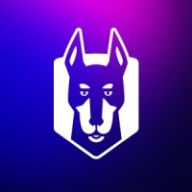

Sangfor HCI and Snyk cater to different technology needs, with Sangfor having an edge in infrastructure management due to strong scalability and security, whereas Snyk stands out in security vulnerability management with its integration capabilities and developer tooling.
Features: Sangfor HCI is noted for its scalability, security integration, and comprehensive support, making it a standout choice for infrastructure solutions. On the other hand, Snyk's notable features include seamless integration, accurate vulnerability assessments, and developer-friendly tooling, providing valuable insights and automation support for DevSecOps pipelines.
Room for Improvement: Sangfor HCI could enhance SSD and flash storage performance, improve Kubernetes and Docker support, and simplify migration processes. Users also point out the need for clearer licensing and better documentation. Snyk users seek improved integrations, more language support, and better static and runtime analysis. Enhanced reporting and filtering options are also desirable.
Ease of Deployment and Customer Service: Sangfor HCI is mainly deployed on-premises, with users praising technical support despite language challenges. It has strong local teams praised in regions like Pakistan. Snyk primarily deploys in cloud environments, supporting remote teams. However, its broad integrations and limited self-service tutorials pose challenges. Both products provide responsive customer service, though Sangfor sometimes faces communication barriers.
Pricing and ROI: Sangfor HCI is commended for its competitive pricing and straightforward licensing, making it cost-effective compared to VMware and Nutanix, with excellent ROI reported, especially for bundled solutions. Snyk is seen as pricey but offers a robust licensing model tailored for developers, deemed cost-effective due to extensive vulnerability coverage, although some users consider it premium.
We could understand the implementation of the product and other features without the need for human interaction.
Their response time aligns with their SLA commitments.
Our long-standing association has ensured smooth communication, resulting in favorable support experiences and satisfactory issue resolution.
Snyk allows for scaling across large organizations, accommodating tens of thousands of applications and over 60,000 repositories.
It lacks the ability to select branches on its Web UI, forcing users to rely on CLI or CI/CD for that functionality.
As we are moving toward GenAI, we expect Snyk to leverage AI features to improve code scanning findings.
The inclusion of AI to remove false positives would be beneficial.
Snyk is less expensive.
After negotiations, we received a special package with a good price point.
Snyk is recognized as the cheapest option we have evaluated.
Our integration of Snyk into GitHub allows us to automatically scan codebases and identify issues, which has improved efficiency.
Snyk helps detect vulnerabilities before code moves to production, allowing for integration with DevOps and providing a shift-left advantage by identifying and fixing bugs before deployment.
I appreciate the UI. It is simple, fast, and I value the precision in the tests.
| Product | Market Share (%) |
|---|---|
| Snyk | 1.3% |
| Sangfor HCI - Hyper Converged Infrastructure | 2.0% |
| Other | 96.7% |


| Company Size | Count |
|---|---|
| Small Business | 23 |
| Midsize Enterprise | 6 |
| Large Enterprise | 3 |
| Company Size | Count |
|---|---|
| Small Business | 20 |
| Midsize Enterprise | 9 |
| Large Enterprise | 21 |
Sangfor HCI is an IT infrastructure platform built on converged architecture. It integrates server virtualization, distributed storage, and networking. Sangfor HCI provides a unified management platform that converges compute, storage, networking, and security on a single software stack. This approach delivers a simplified architecture, ease of use, and reliability for business-critical applications.
Hyperconverged infrastructure is a unified system of data storage. HCI combines storage, computing, networking, and management, unlike traditional storage solutions. HCI systems enable you to build your private cloud, expand to a public cloud, or have your own true hybrid cloud. Sangfor HCI presents two product models: The Sangfor HCI server appliance is a hardware version that enables easy deployment. Sangfor HCI software is the digital version combined with a third-party server that enables flexible deployment.
Sangfor HCI supports Windows systems on desktop and is web-based. Its range of use cases cover a wide spectrum of industries, from healthcare to manufacturing. It is applicable for mid- and large-sized businesses. The software is customizable. Users can customize the logo and contact information in the user interface.
Benefits and Features
Use Cases
Sangfor HCI can be applied tin various scenarios:
Reviews from Real Users
Gabriele P., Senior Software and Systems Engineer at SAMU.IT, says "It is flexible like a hyper-convergence system. You can add nodes, and you can scale to have better performance and stability. I also like the backup feature, the recovery system, and the web interface GUI to handle everything."
A Junior Solutions Engineer at a tech services company adds that "Sangfor has many solutions, and you can easily manage their machine servers with just one management. They're always striving for greatness, and they continuously update their products. For example, they have now built endpoint security within the firewall. They are continuously improving not only the security but also all other products."
Snyk excels in integrating security within the development lifecycle, providing teams with an AI Trust Platform that combines speed with security efficiency, ensuring robust AI application development.
Snyk empowers developers with AI-ready engines offering broad coverage, accuracy, and speed essential for modern development. With AI-powered visibility and security, Snyk allows proactive threat prevention and swift threat remediation. The platform supports shifts toward LLM engineering and AI code analysis, enhancing security and development productivity. Snyk collaborates with GenAI coding assistants for improved productivity and AI application threat management. Platform extensibility supports evolving standards with API access and native integrations, ensuring comprehensive and seamless security embedding in development tools.
What are Snyk's standout features?Industries leverage Snyk for security in CI/CD pipelines by automating checks for dependency vulnerabilities and managing open-source licenses. Its Docker and Kubernetes scanning capabilities enhance container security, supporting a proactive security approach. Integrations with platforms like GitHub and Azure DevOps optimize implementation across diverse software environments.
We monitor all Cloud Management reviews to prevent fraudulent reviews and keep review quality high. We do not post reviews by company employees or direct competitors. We validate each review for authenticity via cross-reference with LinkedIn, and personal follow-up with the reviewer when necessary.